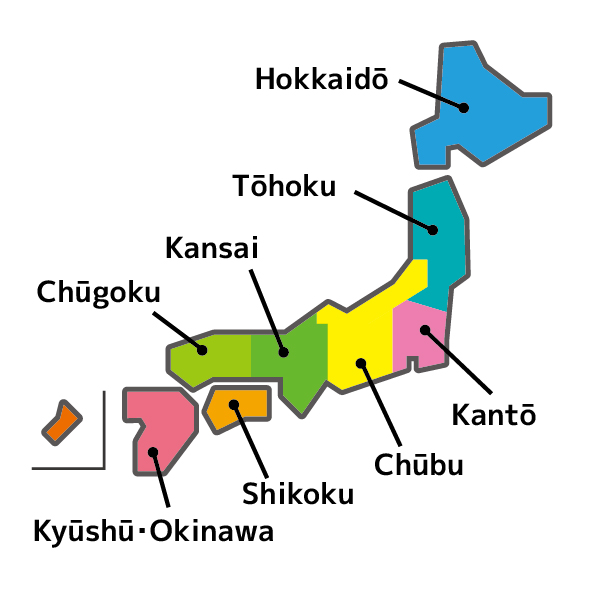Japan stretches from north to south, offering a rich variety of landscapes, cultures, and experiences depending on the region. Here’s a brief guide to each area and its prefectures, highlighting what makes them special for travelers.
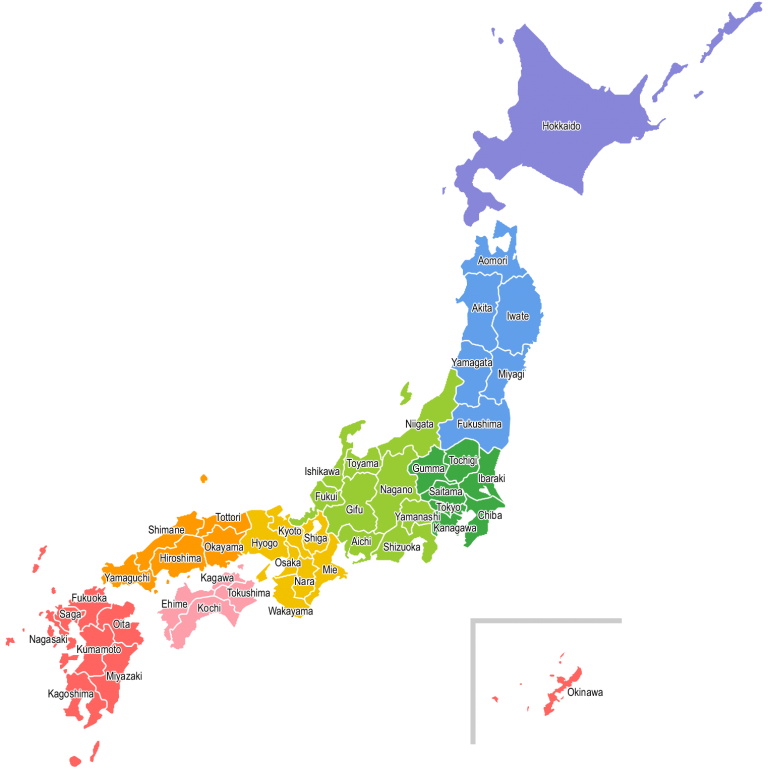
Hokkaido
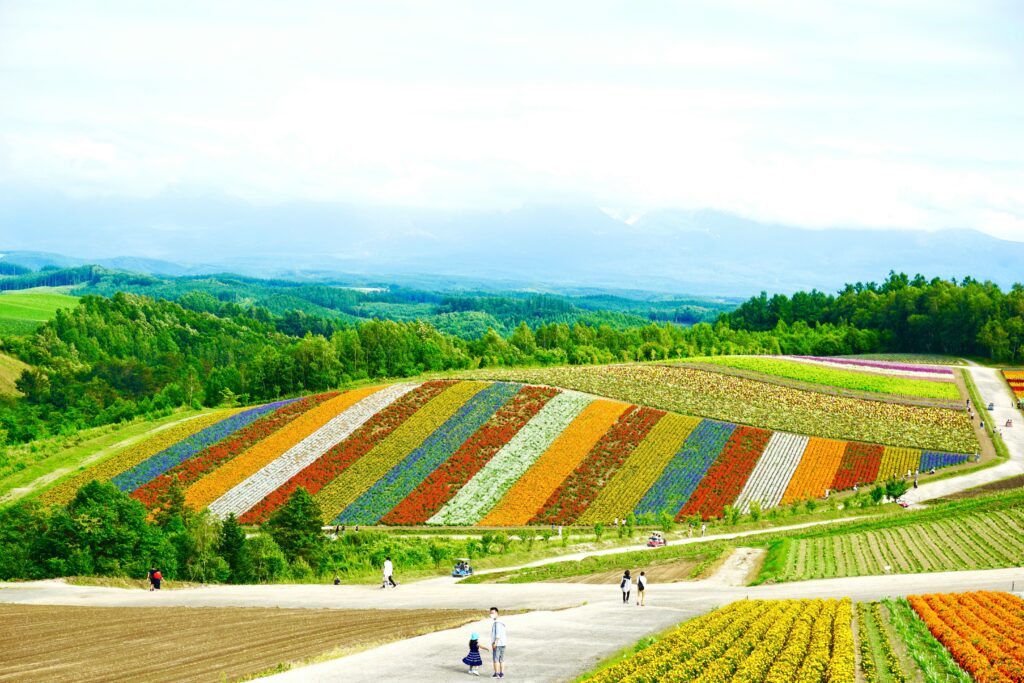
Known for its vast, open landscapes, Hokkaido offers cool summers and snowy winters. In summer, the purple lavender fields of Furano attract photographers from around the world, while winter brings the Sapporo Snow Festival and its impressive snow sculptures. The port town of Hakodate is famous for its twinkling night views.
Tohoku (Aomori, Iwate, Miyagi, Akita, Yamagata, Fukushima)
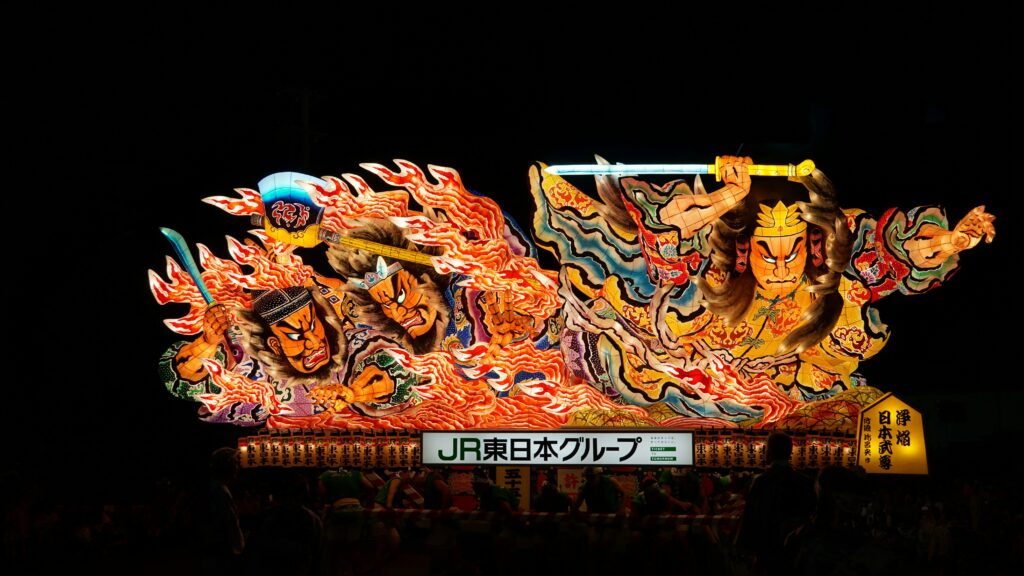
This northeastern region is rich in both nature and tradition. Aomori’s Nebuta Festival lights up summer nights with glowing floats and music. In Iwate, Chuson-ji Temple in Hiraizumi offers a dazzling golden hall. Yamagata’s Zao Onsen lets you soak in open-air hot springs surrounded by “snow monsters”—trees covered in thick frost.
Kanto (Tokyo, Kanagawa, Saitama, Gunma, Tochigi, Ibaraki)
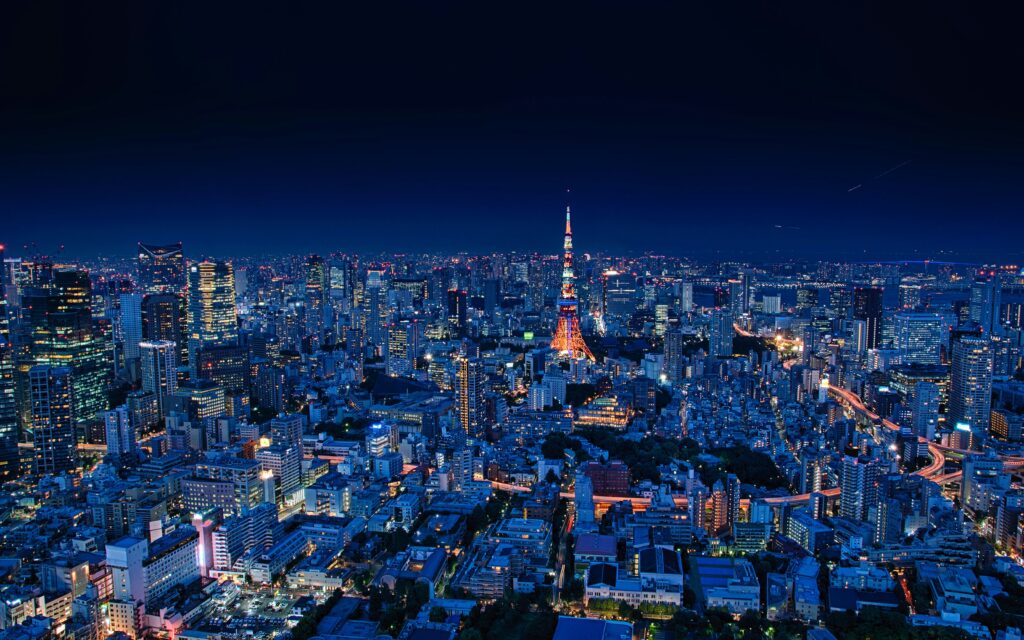
Tokyo blends futuristic skyscrapers with historic shrines. Explore the bright red gate of Sensoji Temple in Asakusa or watch the crowds at the famous Shibuya crossing. In nearby Kanagawa, Kamakura offers a tranquil escape with its Great Buddha and bamboo forests. Gunma’s Kusatsu Onsen and Tochigi’s ornate Nikko shrines are also popular.
Chubu (Niigata, Toyama, Ishikawa, Fukui, Yamanashi, Nagano, Gifu, Shizuoka, Aichi)

This central region is home to Mount Fuji, which can be admired from Yamanashi or Shizuoka. In Nagano, the historic town of Matsumoto charms visitors with its preserved streets and mountain scenery. Gifu’s Shirakawa-go village features steep, thatched-roof houses nestled in snow. Kanazawa (Ishikawa) is known for its traditional crafts and geisha districts.
Kansai (Osaka, Kyoto, Hyogo, Shiga, Nara, Wakayama)
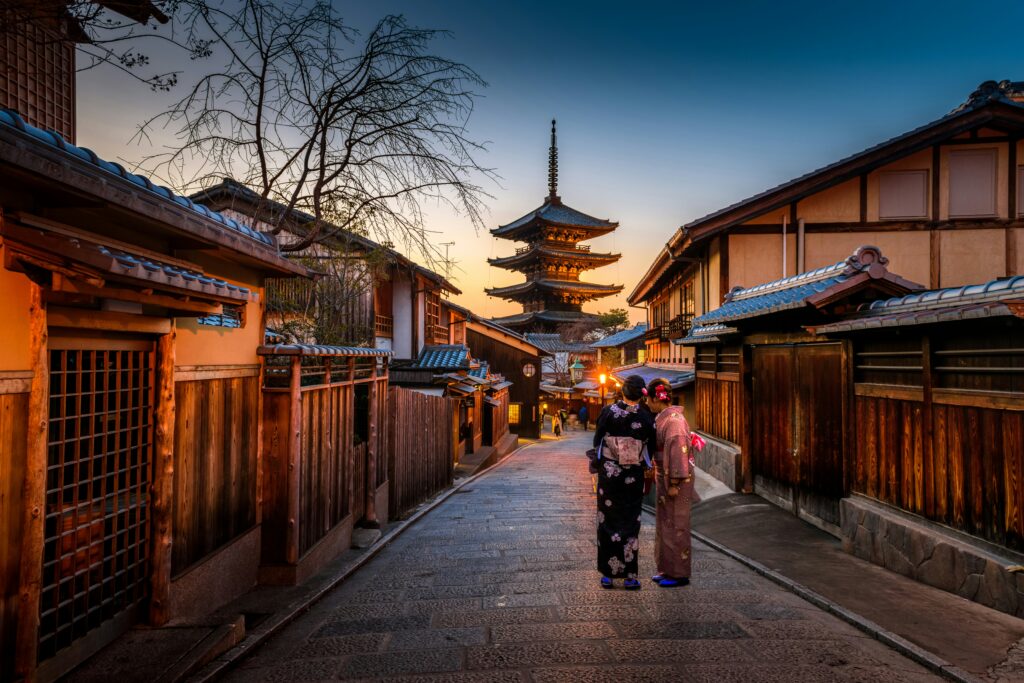
Kyoto, once Japan’s capital, offers iconic sites like the golden Kinkaku-ji Temple and Arashiyama’s bamboo grove. In Nara, friendly deer roam freely near one of the oldest and largest Buddha statues. Osaka, known as Japan’s kitchen, is perfect for trying street food like takoyaki (octopus balls) and skewered cutlets. Kobe’s harbor blends Japanese and Western charm.
Chugoku (Tottori, Shimane, Okayama, Hiroshima, Yamaguchi)
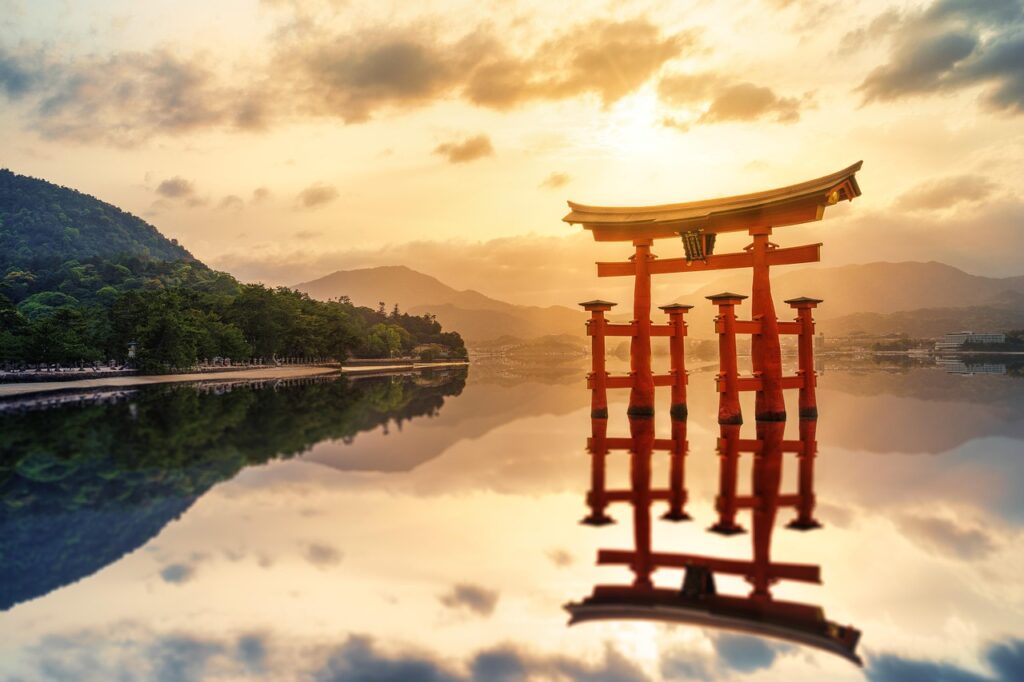
Hiroshima’s Peace Memorial Park is a solemn reminder of history. Nearby, the bright red torii gate of Itsukushima Shrine seems to float on the sea. Tottori Sand Dunes offer an unexpected desert-like landscape. Shimane’s Izumo Taisha, one of Japan’s oldest shrines, is steeped in mythology.
Shikoku (Tokushima, Kagawa, Ehime, Kochi)
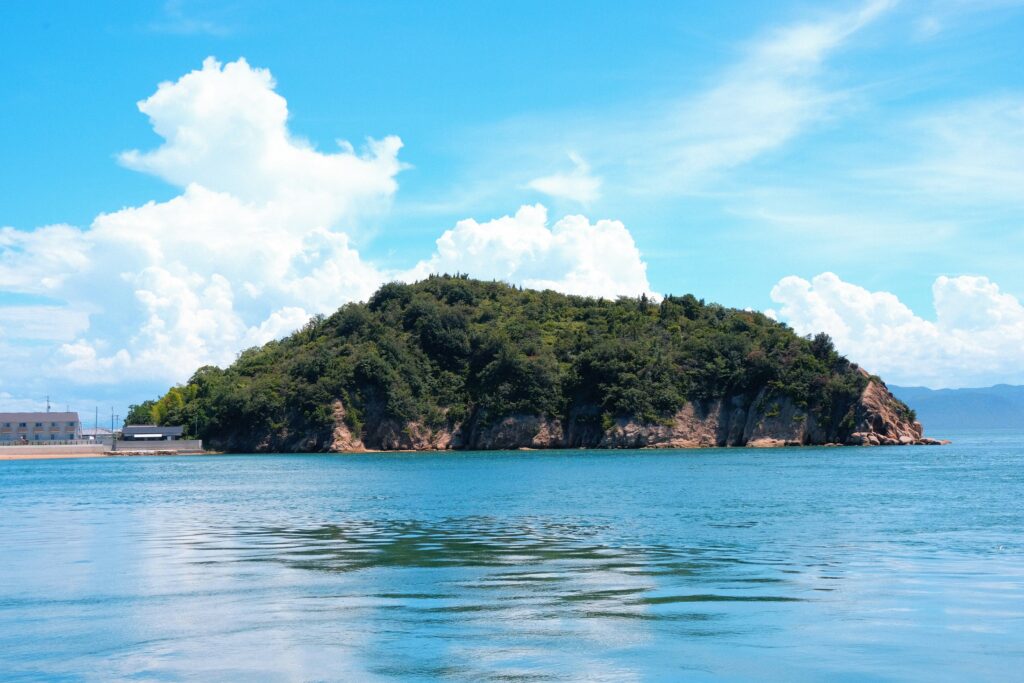
In Kagawa, you can stroll through olive fields on Shodoshima or explore the modern art island of Naoshima. Ehime’s Dogo Onsen is one of Japan’s oldest bathhouses, rich in tradition. Tokushima comes alive with the energetic Awa Odori dance festival. Kochi offers insight into samurai history and fresh seafood markets.
Kyushu & Okinawa (Fukuoka, Saga, Nagasaki, Kumamoto, Oita, Miyazaki, Kagoshima, Okinawa)
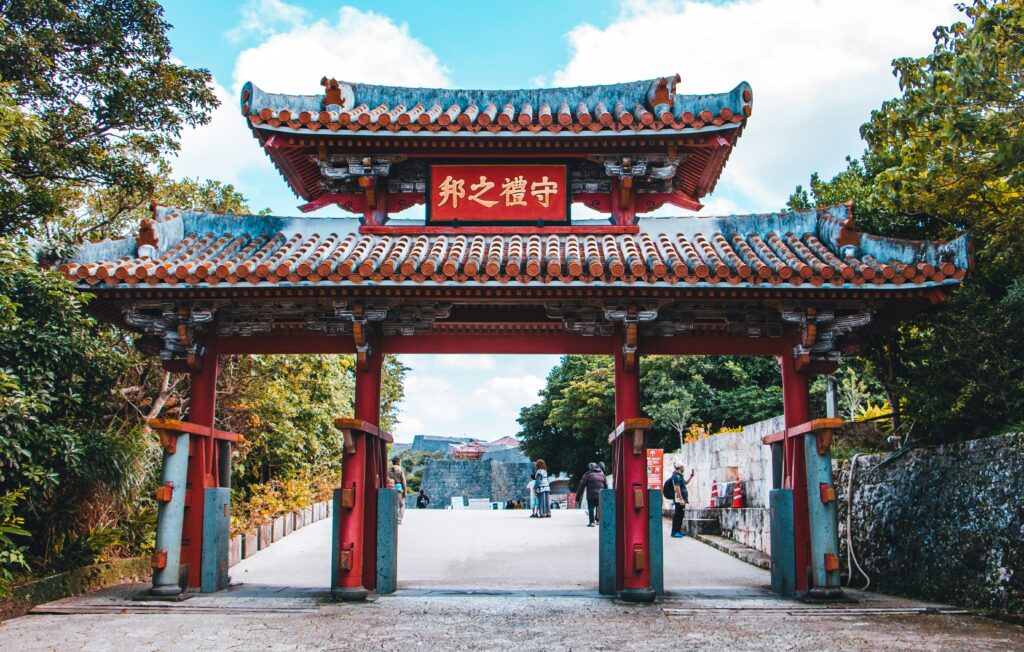
Kyushu is known for its hot springs and volcanoes. In Oita’s Beppu, steaming bathhouses line the streets. Kumamoto Castle stands strong and proud. Nagasaki offers a blend of Japanese, Chinese, and European influences in its churches and Chinatown. In Kagoshima, the active volcano Sakurajima smolders just across the bay. Okinawa, far to the south, boasts turquoise seas, red-tiled roofs, and a unique island culture.
Something New Travel

